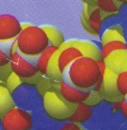 |
||
 |
|||||||||||||||
|
|||||||||||||||
 |
||

Editor. received his Ph.D. in 1983 from Massachusetts Institute of Technology, in Nutritional Biochemistry, with his Ph.D research in toxicology. His primary research activities examined the effects of a nitrosamine--a cancer causing agent formed from the interaction of nitrates and amines, commonly found in foods and medicines--in organ toxicity and damage to DNA and repair. This was done to determine the role of this carcinogen in chemical carcinogenesis. He also examined the influence of zinc, cadmium and alcohol on this process.
Dr. continued this research at Boston University School of Medicine, initially as a research associate and then as an assistant professor of Pathology. While there, he was a visiting scientist at the U.S. EPA in Washington DC., in the Human Health Effects Department, evaluating markers of chemical injury and exposure to assess causation of injury and the potential of these markers to predict future health risk. The purpose of this prestigious program, sponsored by the US. EPA and American Association for the Advancement of Science (AAAS; publishers of the journal, Science), was to interject fresh scientific expertise into the agency to address outstanding problems at EPA with new insight. Dr. findings were subsequently adopted by EPA.
While on faculty at BU School of Medicine, Dr. was also a visiting scientist at the International Agency for Research on Cancer (IARC), the cancer research arm of the World Health Organization (WHO), in Lyon, France, which produces monographs on carcinogens, which are used by governments world-wide (including the U.S. EPA) to regulate chemical carcinogens. Dr. collaborated on an innovative methodology that quantified DNA and tissue damage caused by environmental chemicals and also visually located the damage in target tissues so that the relation between molecular tissue damage and subsequent neoplastic changes and tumor formation could be characterized more precisely.
Dr. consulted to various governmental agencies during this time, including the Massachusetts State Senate Oversight committee for RCRA, a federal program that regulates
the handling, transport and disposal of hazardous waste; for the Energy Department, on particulate toxicity; for the U.S. Congressional Office of Technology Assessment (which provided Congress with assessments of potential problems developing from technological innovation); and was a faculty member on the EPA-sponsored Toxicology Short Course for professionals in related fields, given at both MIT and Boston University Medical School.
Dr. subsequently formed Cambridge Toxicology Group, Inc., and became involved full time with its operation in 1997, consulting to industry, the government and in litigation-related matters of chemical exposure and injury caused by toxic chemicals. Extending his work at EPA in the Human Health Risk Assessment Group, Dr. and CTG continue to focus on community chemical exposure from contaminated ground water, hazardous waste sites and chemical releases from nearby chemical plants. By geographic mapping of occurrences of health complaints that follow an acute or chronic chemical exposure, the role of chemical exposure in such health complaints can be determined more precisely and tracked, aiding in the prediction of future risk of injury to exposed populations.
Dr. research interests include metal toxicity; toxicity of chemical mixtures (such as interactions between metals and solvents)-- how exposure to one alters the toxicity of the other; and extremely low level exposure to chemicals, such as those that disrupt the endocrine system (Endocrine Disruptor Chemicals, or EDCs). Dr. expertise focuses on the study of chemical exposure following massive toxic events--those that affect hundreds or thousands of people--such as the World Trade Center collapse, and respiratory sequelae that often follow such events (World Trade Center Cough identified among many emergency workers).
For a copy of Dr. resume please contact , or [email protected].